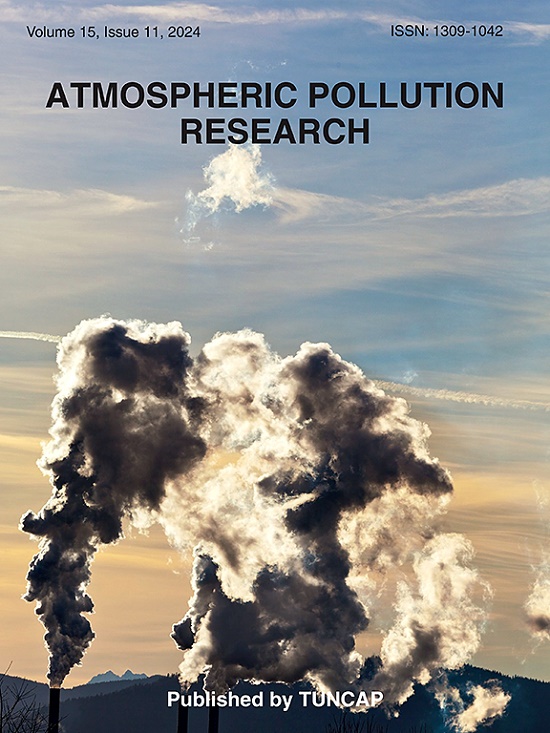A significant reduction in the coal contribution to PM2.5 and exposed health risks due to the energy structure transition
IF 3.9
3区 环境科学与生态学
Q2 ENVIRONMENTAL SCIENCES
引用次数: 0
Abstract
By collecting PM2.5 samples containing heavy metals in a typical coal resource-based city, we analyzed the interannual variation of heavy metal concentrations over an extended time period (2018–2022). This analysis involved apportioning the sources of these heavy metals and evaluating the carcinogenic and non-carcinogenic health risks posed to different populations via the respiratory route. Results showed that Cd (83.99%), Zn (62.56%), Pb (56.97%), and As (2.60%) were associated with coal combustion, exhibiting decreasing trends. The maximal information coefficient (MIC) indicated that most of the elements with strong correlations were associated with coal combustion. Four sources, namely coal combustion, resuspended dust, traffic emission, and industry, were determined using positive matrix factorization. Cr posed the highest carcinogenic risk, particularly among adults. Coal consumption and its contribution showed significant reductions due to the energy structure transition of coal reduction. Notably, the top three metals in terms of carcinogenic risk were all associated with coal combustion. The carcinogenic risk associated with Cd and As from coal combustion was significantly lower in 2022 than in 2018.

煤炭对PM2.5的贡献显著减少,能源结构转型带来的健康风险暴露
通过收集典型煤炭资源型城市含重金属PM2.5样本,分析了2018-2022年较长时间内重金属浓度的年际变化。这项分析包括对这些重金属的来源进行分配,并评估通过呼吸途径对不同人群构成的致癌和非致癌健康风险。结果表明:Cd(83.99%)、Zn(62.56%)、Pb(56.97%)和As(2.60%)与煤的燃烧相关,且呈下降趋势;最大信息系数(MIC)表明,大部分相关性强的元素与煤的燃烧有关。四个来源,即煤炭燃烧,重悬浮粉尘,交通排放,和工业,确定使用正矩阵分解。铬的致癌风险最高,尤其是在成年人中。煤炭消费及其贡献由于煤炭减量的能源结构转变而显著降低。值得注意的是,致癌风险排名前三的金属都与煤炭燃烧有关。与2018年相比,2022年煤炭燃烧产生的镉和砷的致癌风险显著降低。
本文章由计算机程序翻译,如有差异,请以英文原文为准。
求助全文
约1分钟内获得全文
求助全文
来源期刊

Atmospheric Pollution Research
ENVIRONMENTAL SCIENCES-
CiteScore
8.30
自引率
6.70%
发文量
256
审稿时长
36 days
期刊介绍:
Atmospheric Pollution Research (APR) is an international journal designed for the publication of articles on air pollution. Papers should present novel experimental results, theory and modeling of air pollution on local, regional, or global scales. Areas covered are research on inorganic, organic, and persistent organic air pollutants, air quality monitoring, air quality management, atmospheric dispersion and transport, air-surface (soil, water, and vegetation) exchange of pollutants, dry and wet deposition, indoor air quality, exposure assessment, health effects, satellite measurements, natural emissions, atmospheric chemistry, greenhouse gases, and effects on climate change.
 求助内容:
求助内容: 应助结果提醒方式:
应助结果提醒方式:


